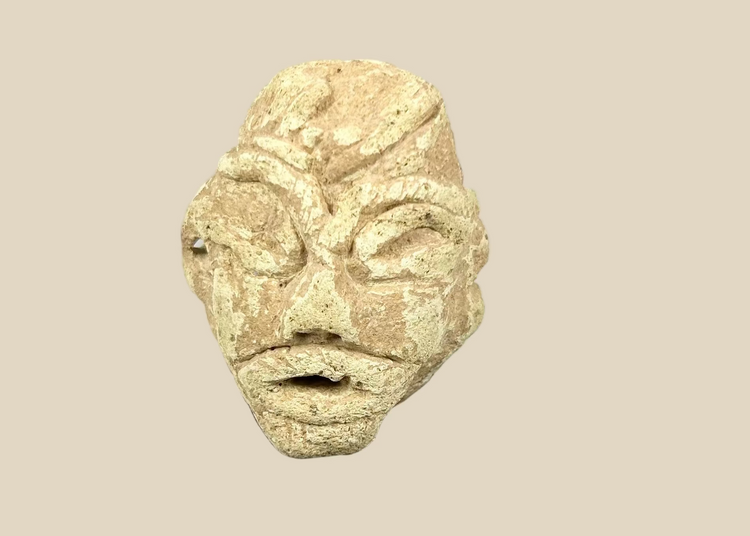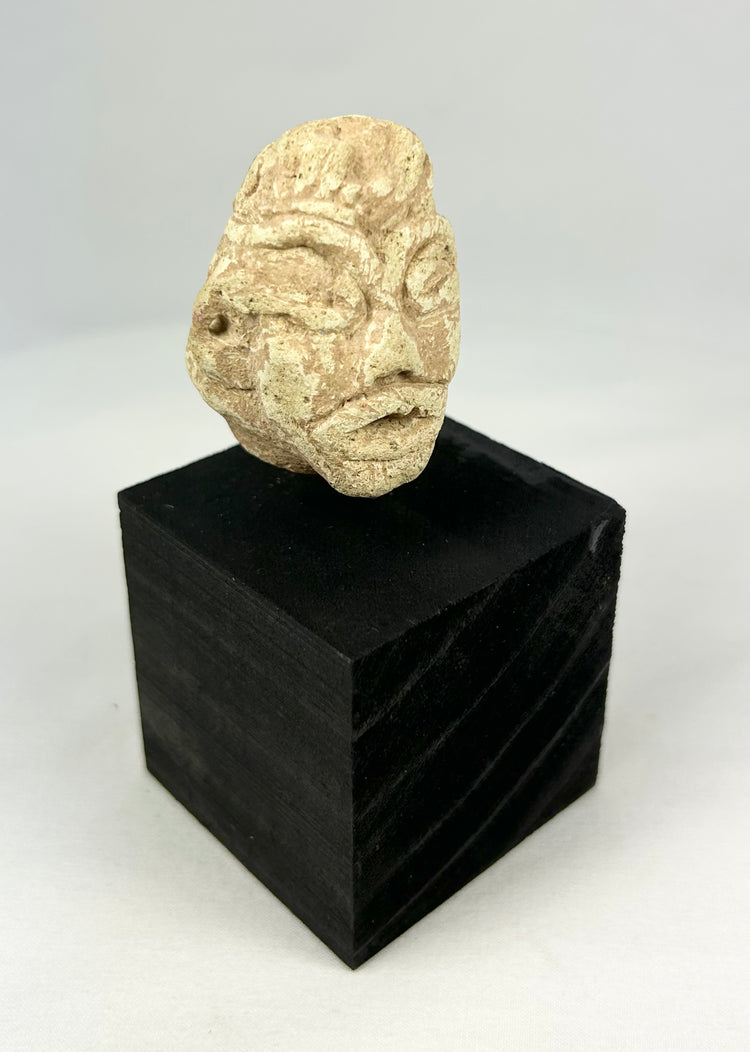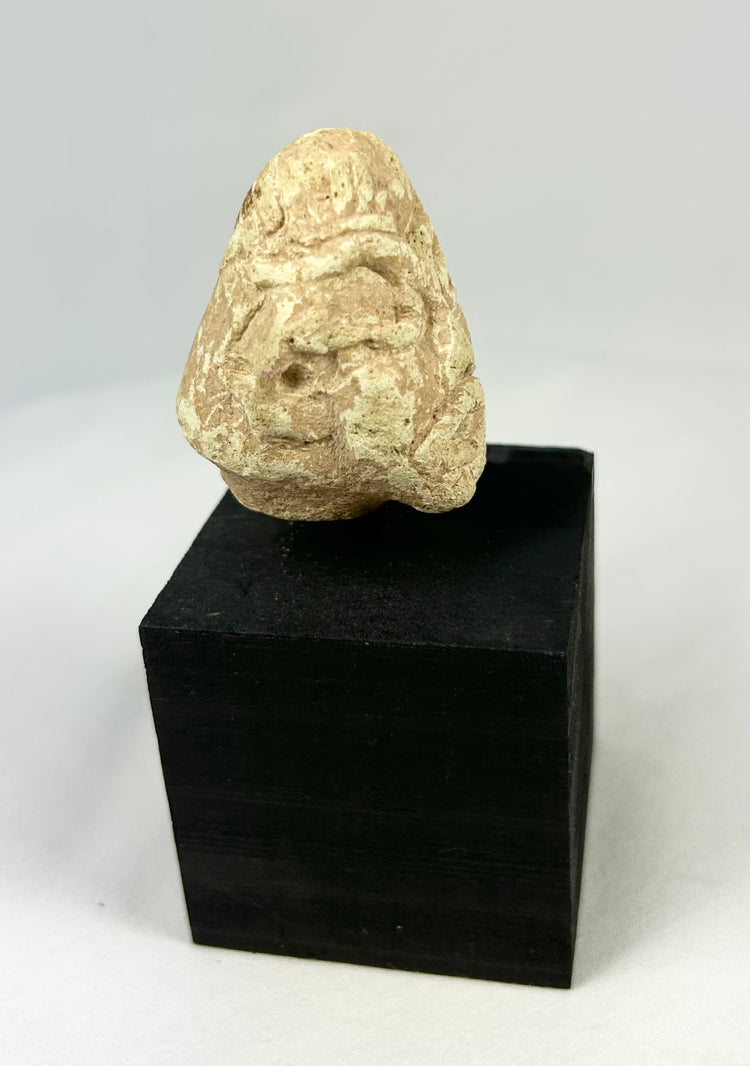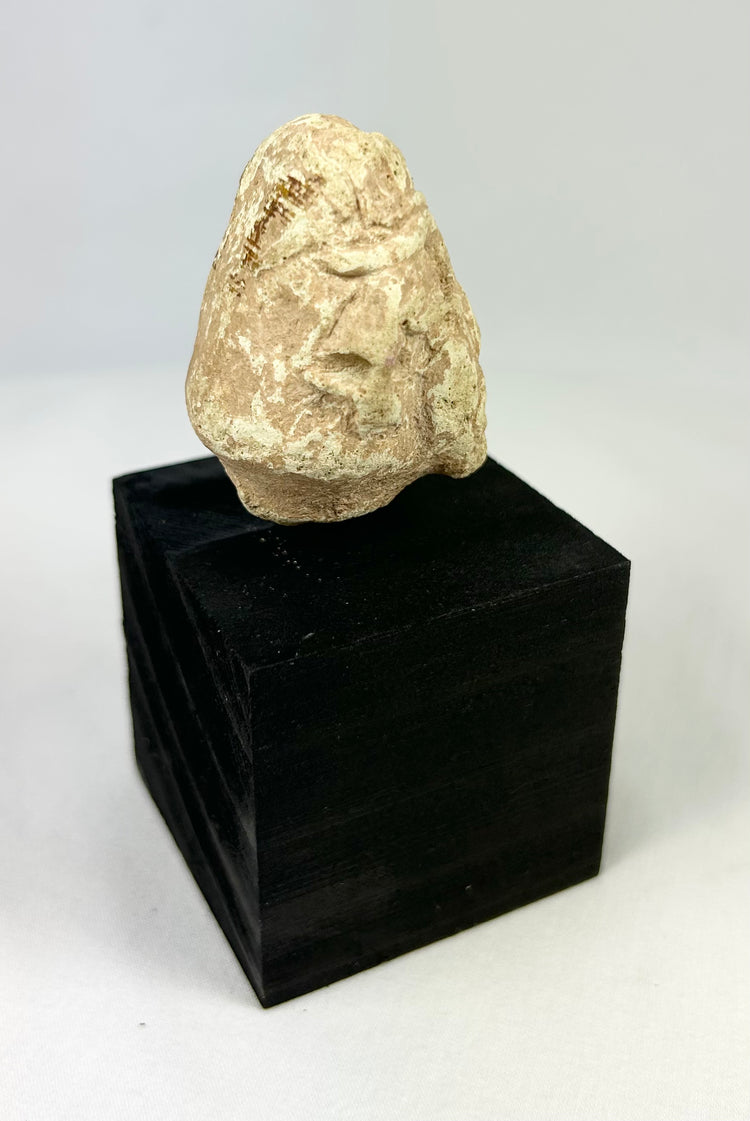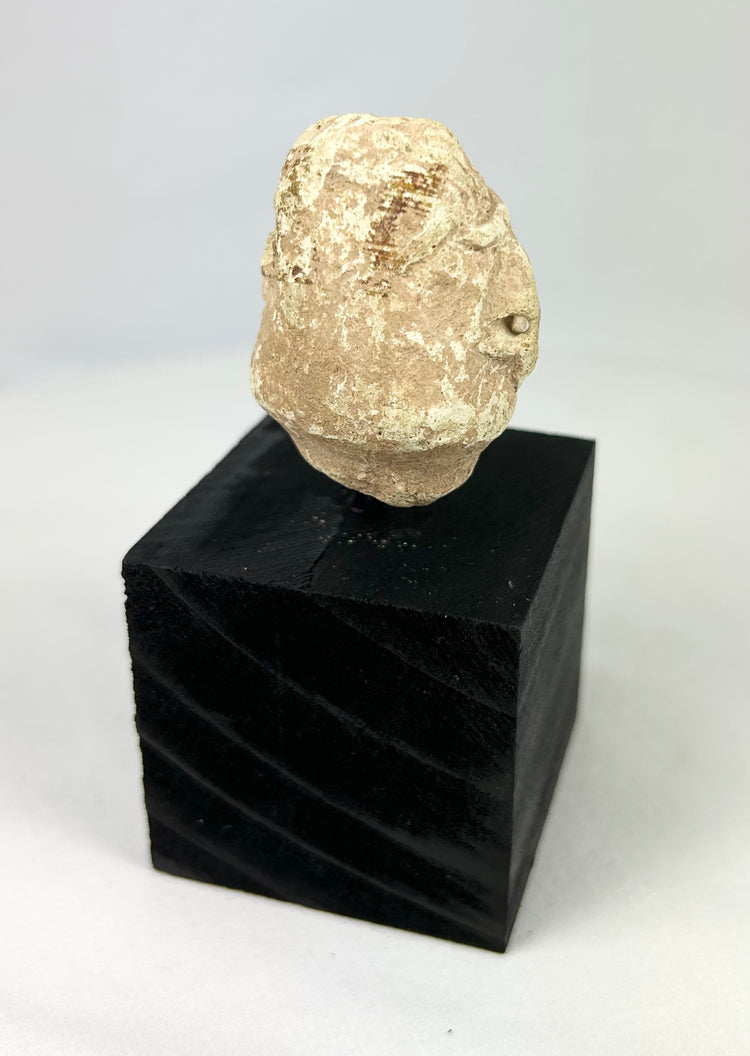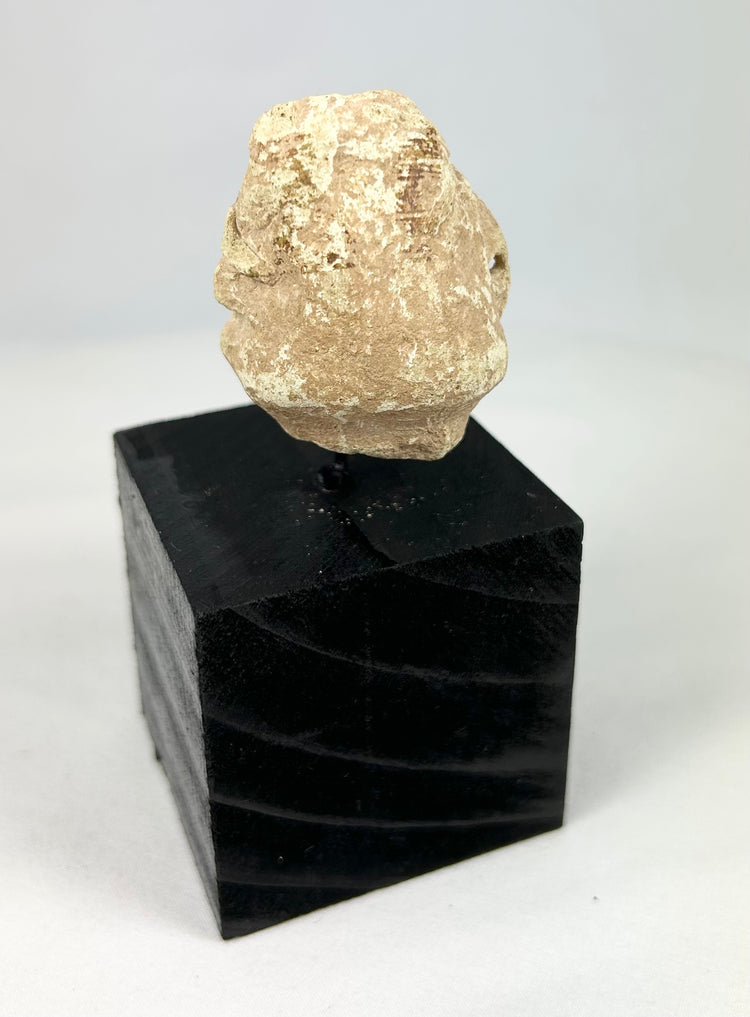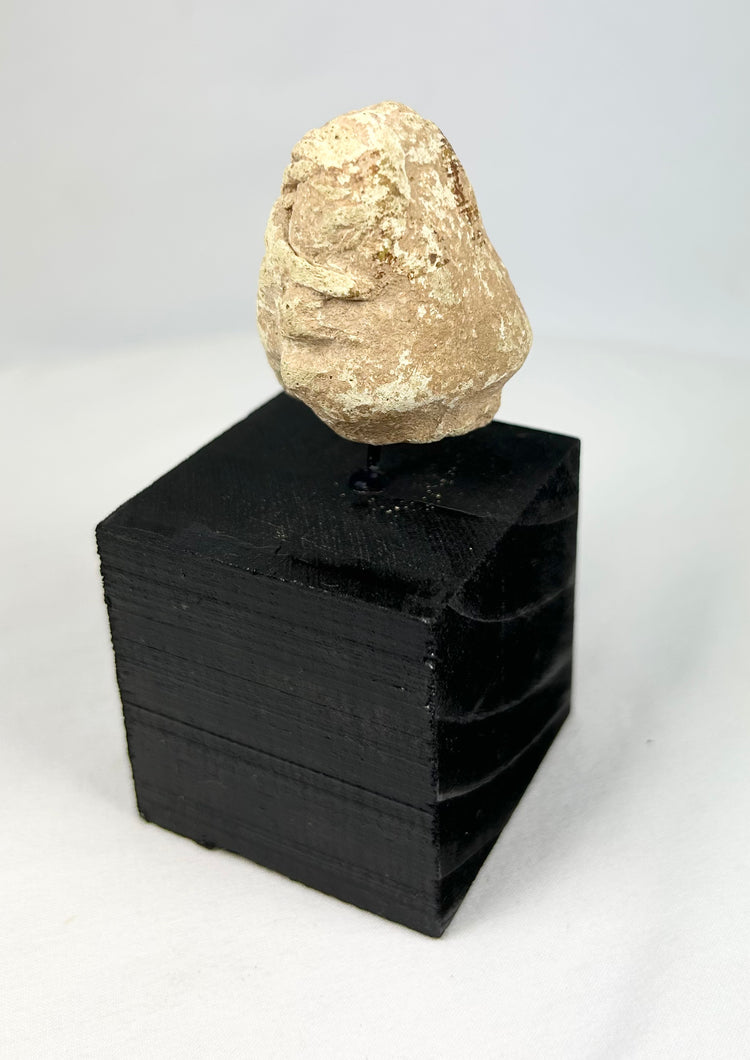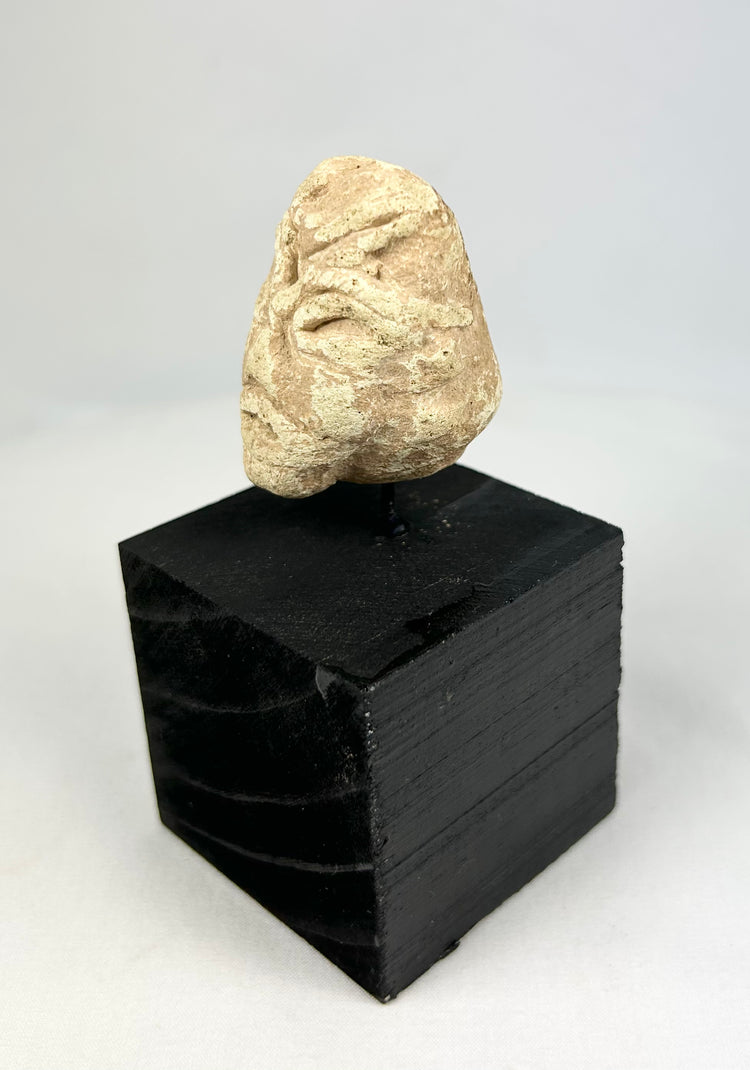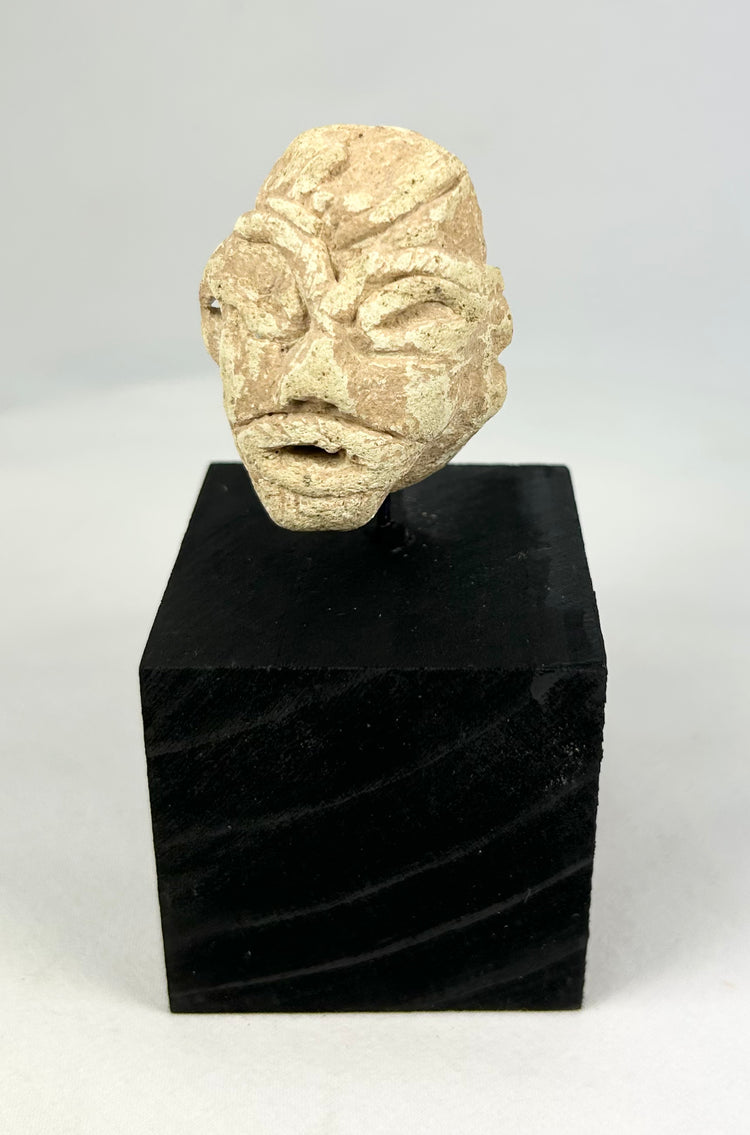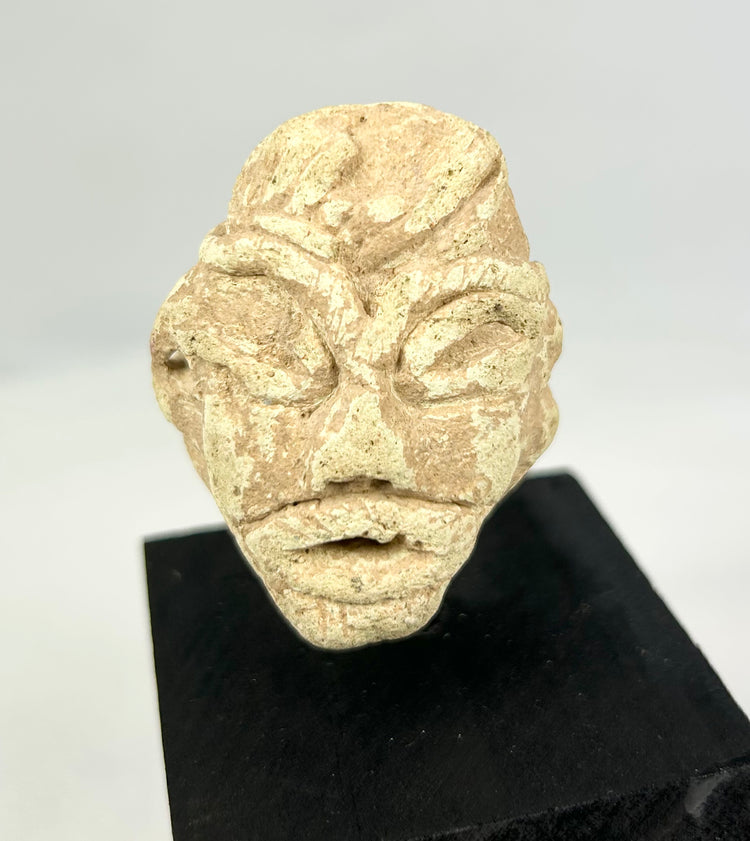Discover our curated collection of ancient and ethnographic stone head sculptures: Ancient Stone Head Artifacts – Relic And Rarity
Near Eastern Stone Idol Head | Mesopotamian Style | 2000–800 BCE
Description
More
Less
More
Less
Historical Context & Origin
Region: Near East, Mesopotamia
Material: Carved limestone (or similar soft stone)
Period: Possibly 2000–800 BCE (Mesopotamian idol tradition)
Description
This carved stone head reflects the style of Mesopotamian votive and idol figures, featuring almond-shaped eyes, a broad nose, and a wide mouth. The back is roughly worked and unfinished, indicating it was likely part of a larger statuette. The abstracted facial features, including deep-set eyes and simplified geometric forms, are characteristic of Near Eastern sculptural traditions during the 2nd–1st millennium BCE. The piece is mounted on a modern black display stand for presentation.
Features
- Stone head fragment with stylized Mesopotamian facial features
- Broad flat nose, incised almond-shaped eyes, and simplified mouth
- Flat, unfinished reverse
- Mounted on a modern display stand
- Strong parallels to votive and idol figures from Mesopotamia
Cultural Significance
Idol heads and votive figures were central to Mesopotamian religious practice, often dedicated to deities in temples. Their simplified yet expressive forms conveyed both symbolic abstraction and spiritual presence, providing a tangible focus for devotion and ritual.
Condition
Fragmentary with surface erosion and wear consistent with long antiquity. Facial features remain clearly defined despite weathering.
Dimensions (approximate)
Height: 4.25 in
Width: 2 in
Depth: 2 in
Age
Possibly 2000–800 BCE (Mesopotamian idol tradition)
Learn More
Discover a comparable museum example of Mesopotamian Sculpture of a Head
Description
Historical Context & Origin
Region: Near East, Mesopotamia
Material: Carved limestone (or similar soft stone)
Period: Possibly 2000–800 BCE (Mesopotamian idol tradition)
Description
This carved stone head reflects the style of Mesopotamian votive and idol figures, featuring almond-shaped eyes, a broad nose, and a wide mouth. The back is roughly worked and unfinished, indicating it was likely part of a larger statuette. The abstracted facial features, including deep-set eyes and simplified geometric forms, are characteristic of Near Eastern sculptural traditions during the 2nd–1st millennium BCE. The piece is mounted on a modern black display stand for presentation.
Features
- Stone head fragment with stylized Mesopotamian facial features
- Broad flat nose, incised almond-shaped eyes, and simplified mouth
- Flat, unfinished reverse
- Mounted on a modern display stand
- Strong parallels to votive and idol figures from Mesopotamia
Cultural Significance
Idol heads and votive figures were central to Mesopotamian religious practice, often dedicated to deities in temples. Their simplified yet expressive forms conveyed both symbolic abstraction and spiritual presence, providing a tangible focus for devotion and ritual.
Condition
Fragmentary with surface erosion and wear consistent with long antiquity. Facial features remain clearly defined despite weathering.
Dimensions (approximate)
Height: 4.25 in
Width: 2 in
Depth: 2 in
Age
Possibly 2000–800 BCE (Mesopotamian idol tradition)
Learn More
Discover a comparable museum example of Mesopotamian Sculpture of a Head
You May Also Like


























